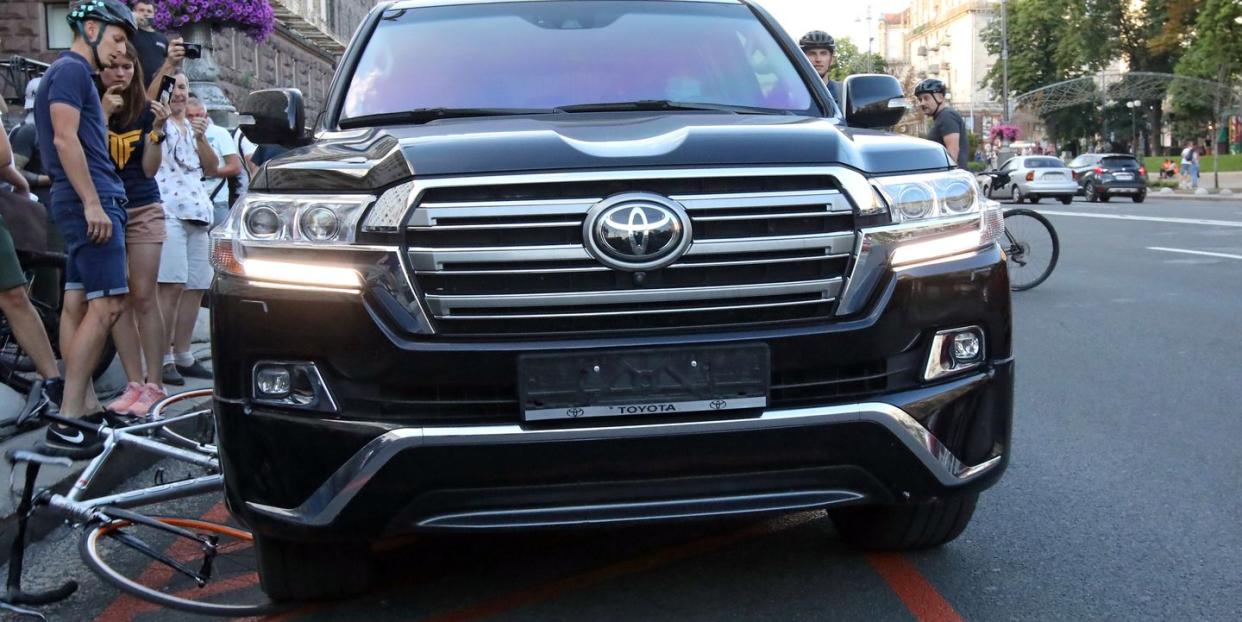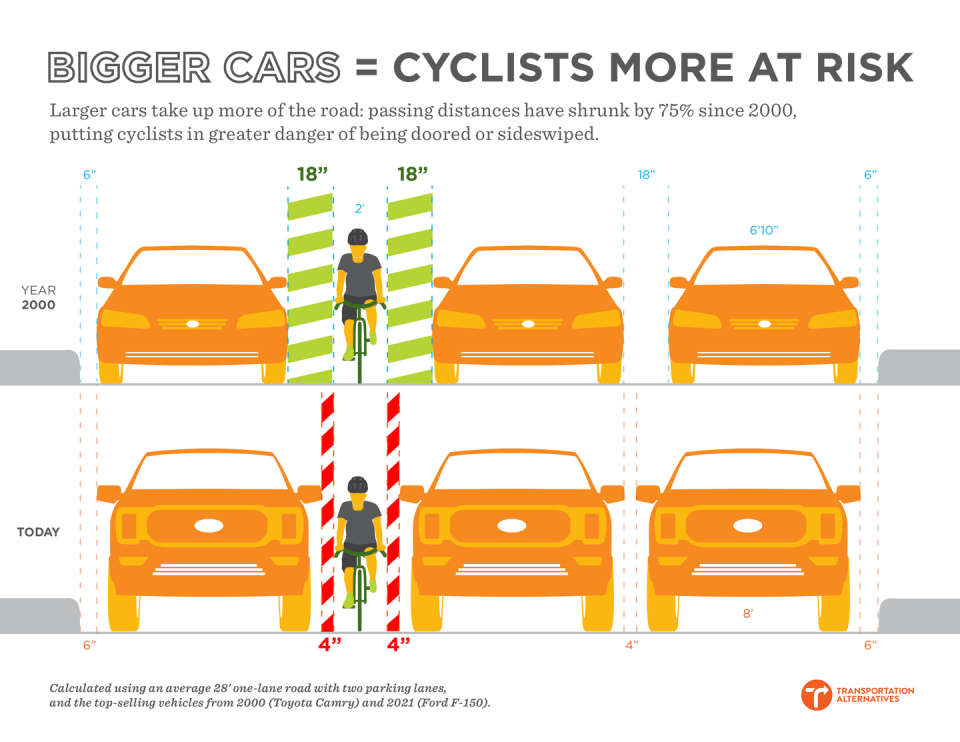As Cars Get Bigger, Bike Lanes Haven’t Adjusted to Protect Cyclists

Have you ever been riding along in the bike lane when the driver of an SUV or truck nearly buzzed you as they rolled past? You’re not alone: As cars have gotten wider and heavier in recent years and SUVs have become the new family vehicle, bike lanes are getting more squeezed and riding is getting more dangerous.
Earlier this month, Transportation Alternatives, an NYC-based organization focused on reclaiming NYC streets for bikes and pedestrians, posted a graphic that shocked us—and made us think about the cars we have in our driveways:

Their research has found that since 2000, the passing distance between a car and cyclist has shrunk by 75 percent on average. They give the example of 2000’s best-selling car, a Toyota Camry, which would allow for 18 inches on either side of the cyclist in a standard bike lane. By comparison, sharing the road with today’s popular Ford F-150 truck would give the cyclist four inches of space to maneuver. And NYC offers even more challenges since many bike lanes are between street parking and traffic, says Transportation Alternative’s senior researcher Em Friedenberg. As cars and SUVs have gotten wider, they also take up bike lane space from the parked car side as well, narrowing the bike lane even further.
Transportation Alternative has collected some scary stats about these bigger vehicles: SUVs have caused an extra 1,100 pedestrian deaths between 2000 and 2019 with no corresponding increase in motorist safety. And children are eight times more likely to be killed in crashes involving SUVs and pick-ups than regular cars.
Weight is also to blame: For every 1,000 pounds a car weighs over a Toyota Corolla, the chance of killing another person goes up by 46 percent. Heavier vehicles lead to 28,000 more U.S. deaths. “Vehicles are growing in weight as well as size, which makes them more lethal,” Friedenberg says bluntly. “The heavier a car is, the more likely it is to kill you if it hits you.”
Readers may recall the tragic death of a cyclist last month in Brooklyn: Kala Santiago was struck by a truck while riding in the bike lane near Palisades Park. Reports stated that she hit a parked truck and veered into the road, into the delivery truck’s path. If she had more room in the bike lane on either side, her death may have been avoided.
Widening bike lanes isn’t the ideal solution, though. Friedenberg notes that the best solution is creating more protected bike lanes. There’s even a simple way to do that without erecting full barriers, she says. If cities would simply swap parking lanes with the bike lane, using parked cars to protect the cyclists rather than using cyclists’ bodies to protect the parked cars, lives could be saved.
Friedenberg also cites the need for taxes on vehicles based on weight, in order to hopefully quell the rising tide of bigger and bigger gas-guzzling vehicles. “In addition, the federal government needs to rein in the size of the vehicles and stop car companies from scaling up in size,” she says. “People can’t even get their SUVs and trucks in standard garages anymore. It’s become an arms race: We’re scared of being the ones in the small cars because they don’t feel as safe, so we continue to size up.”
If you are a driver as well as a cyclist, she recommends doing some math to see just how wide your car or SUV is, and actually see how it looks when it’s on the road. Are you tight to both painted lines? If so, you need to take extra care while passing cyclists and pedestrians—you may have less space than you think! And the higher up you are—in SUVs, vans and trucks—the easier it is to underestimate how much space you need to give someone when passing.
As a cyclist, you should be able to ride in peace, says Friedenberg. But if you do want to take action, consider petitioning your local government for better, wider, more protected bike lanes—or even a local tax on larger vehicles. "City governments need to step up and create better protected infrastructure," she says. "In NYC, we need fully protected bike lanes that connect all our neighborhoods. And it shouldn’t be on individual bike riders to protect ourselves from government inaction. We need action at all levels to make cars smaller and give bike riders that have physical protection that we deserve on the streets."
Not sure where to begin? You can check out Transportation Alternative’s current campaigns and take action in NYC right here.
You Might Also Like

